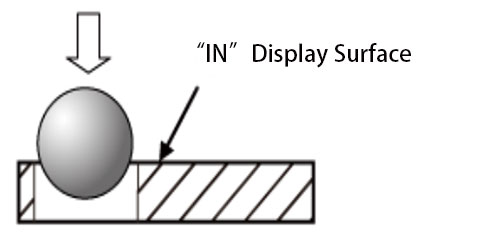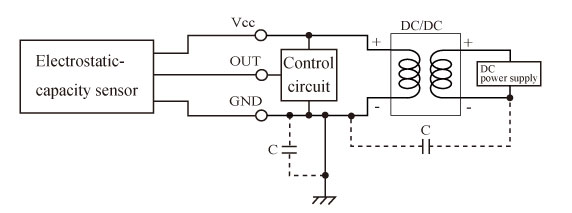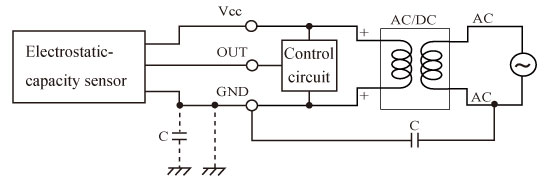How to Install Proximity Sensors?
Installing proximity sensor is a task that involves electronic equipment and automation systems. Proximity sensors are typically used to detect the proximity or presence of an object, which triggers the appropriate operation or control. Proximity sensors, including capacitive proximity sensors, use high-frequency oscillating circuits. Therefore, when multiple proximity sensors are mounted side-by-side or facing each other, the sensors must be separated from each other by at least a specified distance. the ATO store describes how to install proximity sensors and the related precautions.
Preparation Before Installation
Before delving into the installation procedure, we need to understand the basic working principle of proximity sensors. Proximity sensors detect the proximity or presence of an object through different technologies such as inductance, ultrasonic, infrared, etc. Understanding how the sensor works helps us to better understand its installation process.
Before installing a proximity sensor, it is important to first make sure that you have selected the right type of sensor for a particular application. Different environments and tasks may require different types of sensors, such as inductive sensors that sense metal, infrared sensors, etc. A detailed understanding of the technical specifications and application limitations of the sensor is critical to making the right choice.
Before the actual installation, some preparations are essential. First, the excellent proximity sensor & switch's installation manual and technical specifications need to be carefully read to ensure that the exact requirements of the installation are understood. Second, check all the necessary tools and equipment to make sure they are all available to avoid unnecessary interruptions in the installation process.
About the Operating Environment
- Avoid using the sensor outdoors, in direct sunlight, or where the temperature may change rapidly and repeatedly.
Otherwise, internal parts and housings may deteriorate. - Avoid using the sensor where chemicals, organic solvents, or other such substances may splash.
- If the sensor is installed near equipment that generates large surges (such as motors, welders, or solenoids), install a surge absorber on the surge-generating equipment.
- When using a switching power supply, be sure to ground the FG terminal to prevent the generation of harmonics.
- Proximity sensors (including capacitive proximity sensors) use high-frequency oscillation circuits.
- If high-frequency equipment (welding machines, inverter motors, broadcasting stations) is used near the sensor mounting location, the sensor may malfunction. Be sure to ground the installed and surrounding metal objects.
About Wiring
- Before turning on the power to the system, be sure to check that the wiring is correct, as incorrect wiring can damage the internal circuitry.
- When extending wires, use large diameter cables to minimize the effect of voltage drop. Note that depending on the line capacity, distortion may appear in the output waveform when using extension cables.
- If the cable is installed in parallel with the high voltage line or power supply line, induced noise may cause malfunction or damage, separate the cables or install them in separate metal cable ducts.
Mounting Examples
Concerning the Mounting of Capacitive Proximity Sensors: The detection distance varies depending on the conductivity, dielectric constant, and volume of the target. Therefore, check the detection distance with an appropriate target beforehand and set it taking into account the error margin. If one or several targets with small dielectric constants are placed or stacked on the detection surface, the reset operation may not work properly due to the number of target objects. It is recommended to check that such problems do not occur before using the sensor.
Note that the reset operation may not work properly if water adheres to the detection surface, or if condensation or frosting occurs due to temperature changes. Regarding the load used: Transistors are used for the sensor output. The transistor may deteriorate or be damaged if inductive loads that generate large inrush currents (such as lamps or motors) are switched. In this case, use a relay or similar device.

Concerning the Electrostatic Resistance of the Through Proximity Sensor: Install the system so that the bouncing ball always comes out of the surface that displays "IN". This protects the circuitry as the bouncing ball rubs against plastic or other surrounding materials and discharges the accumulated static electricity to an electrostatic shielding plate as it passes through the sensor.
About the Power Supply for Capacitive Proximity Sensors: When powered by a battery, connect the GND side (0 V) of the capacitive proximity sensor's power supply to the earth or a large metal frame, either directly or through a 1000 pF capacitor. Make a complete connection with no bad contacts.

When the coupling capacitance between the primary and secondary sides of the sensor power supply is small, when using a DC to DC converter, connect the GND side (0 V) of the sensor power supply to earth or a large metal frame, either directly or via a 1000 pF capacitor. Make a complete connection with no bad contacts.

If the above connection is not possible, connect it to the GND side of the DC power supply on the primary side. When using an AC to DC converter, or as described above, when the GND side (0 V) of the electrostatic capacitance sensor power supply cannot be connected to the earth or a metal frame, connect it to the AC primary side of the power supply using the following, a 1000 pF capacitor.

Use a Capacitor with Sufficient withstand Voltage: If a power supply with a lot of common-mode noise is used, connect the 0 V line of the electrostatic capacitance sensor either directly or through a 1000 pF capacitor to the metal frame on which the sensor is mounted.
Precautions
Influence of Surrounding Metal: Shielded and unshielded proximity sensors are affected differently by surrounding metal. Typically, shielded types can be mounted directly to or embedded in metal. However, if an unshielded sensor is surrounded by metal, increased detection distance and reset operation problems may result. Therefore, each model must be mounted separately from metal objects and at least the distance indicated for that model must be maintained.
Mutual Interference: Proximity sensors, including capacitive proximity sensors, use high-frequency oscillating circuits. Therefore, when multiple proximity sensors are mounted side-by-side or facing each other, the sensors must be separated from each other by at least the specified distance. To prevent such interference, we also offer another frequency type of sensor (type B). By combining different frequency types with sensors, the mounting distance between sensors can be reduced. (Please note, however, that capacitive proximity sensors are not available in different frequency types.)
Regarding Detection Target Size, Material, and Coating: A detection distance has been set for each model using a standard detection target of a specific size. The smaller the detection distance, the shorter the detection distance may be. Typically, the standard detection target is an iron plate (magnetic metal) with a thickness of 1 mm. In the case of non-magnetic metals, the detection distance may be reduced by 20% to 80%, and since the distance depends on the material, prior verification is recommended.
Note, however, that an ultra-thin target (e.g., a deposited film) with no electrical conductivity cannot be detected, although a detection distance similar to that of magnetic metals can be obtained using a foil (thickness of 0.01 mm or less) due to the skinning effect produced by eddy currents. If the detection target is coated, the detection distance may be shortened depending on the type of coating. Therefore, it is recommended to confirm the distance beforehand so that the detection distance does not change much when the metal surface is coated with an insulating material.
With proper installation and maintenance, proximity sensors will provide reliable data for automated systems and enable more efficient operations. Close adherence to the manufacturer's recommendations during installation, combined with practical application requirements, will help ensure optimum sensor performance. Installing a proximity sensor may require some technical experience, but following the right steps and precautions can make the process go more smoothly and ensure system reliability and stability.

